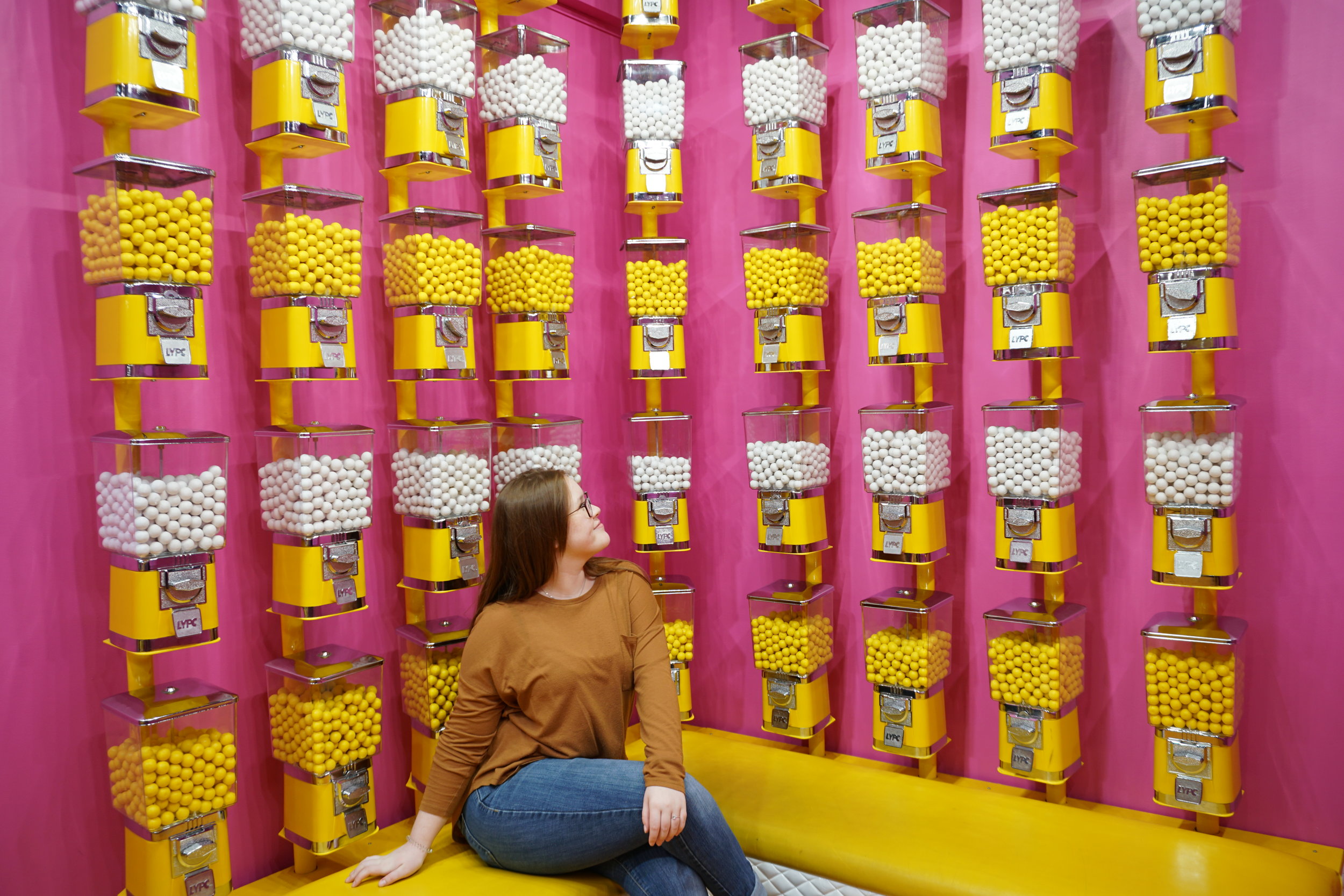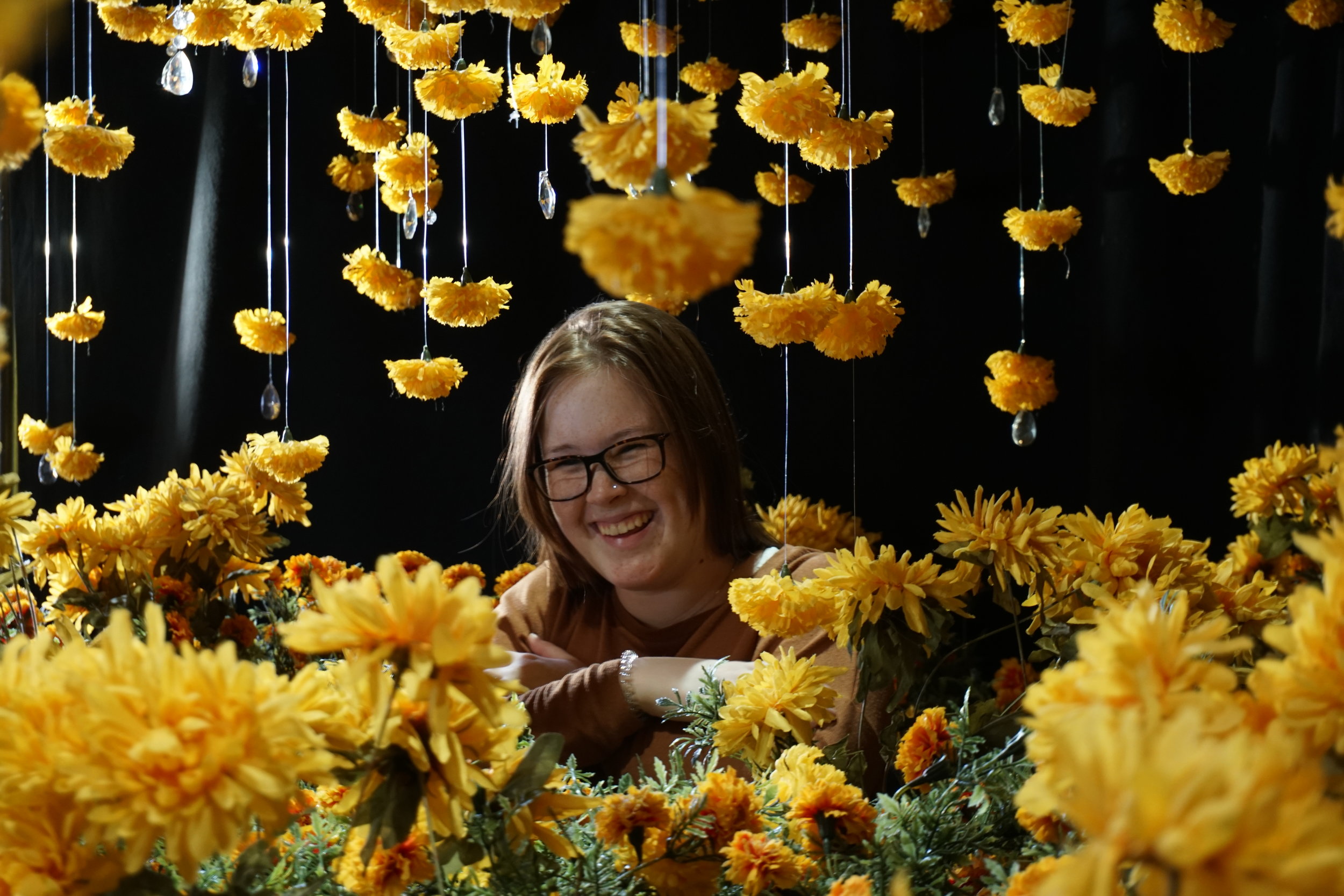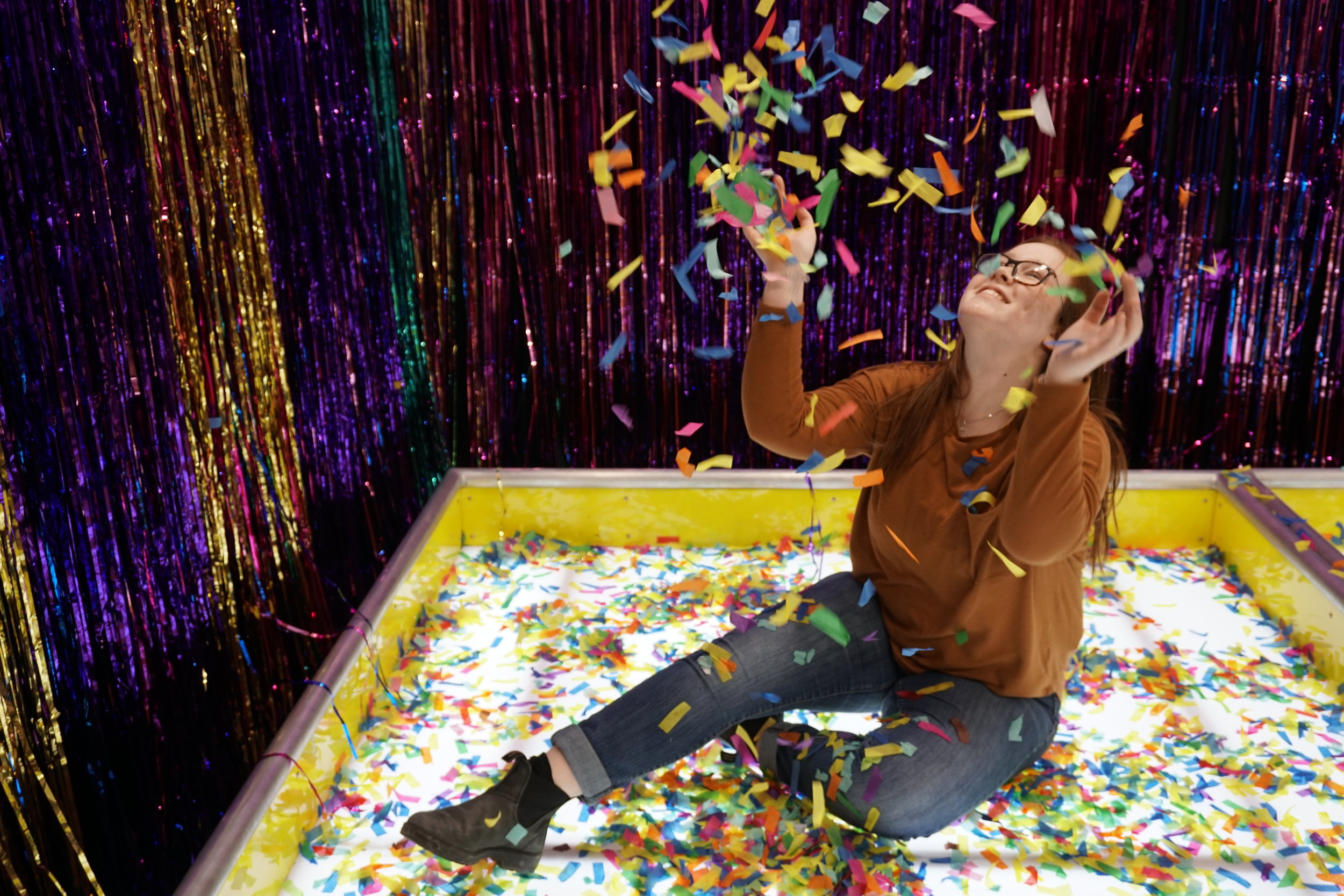Toronto’s Abbozzo Gallery centres their second annual group exhibition after “Girl Dinner,” where seven emerging artists portray girlhood through their different interpretations
By Neda Madany
Inside the "Girl Dinner" Emerging Artists Exhibition at the Abbozzo Gallery (Neda Madany/CanCulture)
Pasta brought back from Sunday’s dinner party, with a cup of grapes and half a stalk of celery left over from this afternoon’s lunch.One of the infinite possible recipes for “Girl Dinner.” Sharing unconventional combinations of food to create a low-effort dinner sparked one of TikTok’s most honest and relatable trends.
“This is my meal, I call this girl dinner,” from TikTok user @karmapilled, is a sound that plays in the background of thousands of girls sharing what they pieced together in their kitchens hassle-free.
Taking inspiration from the emergence of girl trends on social media and its manifestation into the real world, the Abbozzo Gallery’s second annual group exhibition showcased the work of seven artists and their interpretations of girlhood.
The combined group of artists and their separate art mediums are “meant to echo the delightful varieties that make up a quintessential girl dinner,” according to the Abbozzo Gallery.
“Girl Dinner” identified a relatable phenomenon that girls didn’t even know was shared by other girls, while still allowing for variation, as no two meals are the same. The widespread relatability rooted in the trend broadened the horizons for sharing experiences of girlhood via social media that embraces more girl-centred trends and feminist conversations.
View of the “Girl Dinner” exhibition at Abbozzo Gallery (Neda Madany/CanCulture)
The invitation of the playful and satirical “Girl Dinner” trend being transformed into art pieces called Katie Butler to participate in the exhibit. “I really like playful details and stuff in art,” she says. The fluctuating and various approaches to “Girl Dinner” and other girl trends instantly opened up artistic ideas for the emerging artist from Ontario.
“Girl Dinner” immediately comes off as light-hearted, but Butler also sees the trend through a critical lens connected with feminism. The scenario of “Girl dinner” happens when a girl is by herself, for herself, and free from external perceptions. The trend suggests that girls will put together minimal meals to serve a basic need. However, Butler questions how much of the food we eat and prepare is performative for other people.
As intentionally revealing the secret shared phenomena that many girls experience, “‘Girl Dinner’ is very honest about what you might do when other people aren’t looking,” she says. "Girlhood in general is very honest and not performative.”
Already previously indulged with the theme of girlhood in her artwork, Alana Kinsey sees showcasing softness, femininity and things girls embrace as especially valuable. “I love the idea of exploring and honouring girlhood, especially in this day and age,” Kinsey says. The small girly touches from women everywhere in the world are what her art speaks to.
“It’s just the everyday little things and how we can make it a little bit more beautiful.”
When Kinsey first encountered the “Girl Dinner” trend, her initial thought was that she was not the only one. “You don’t have to make this big, gourmet meal every night, sometimes you want to have a snack plate,” she says. “Little girly things that we do and make it normal.”
The difference between moments considered girly versus womanly is a sense of privacy and being unapologetic, Butler explains. “I think that’s what you do when you’re a little girl,” she says. “Before you have that moment where there are things you should be ashamed of.”
Pity Party by Katie Butler for the “Girl Dinner” exhibition at Abbozzo Gallery (Neda Madany/CanCulture)
A theme that Butler kept in mind while creating her art pieces for the exhibit was feminine indulgence. Pity Party, an acrylic painting by Butler, draws from the emotional indulgence of experiencing sadness. Rather than pitying a woman alone at a bar, Butler intended for her subject to be viewed as overdoing her emotions. Welcoming and indulging herself into the feeling of sadness, similar to watching a sad movie when you’re feeling sad. “That catharsis feels nice,” Butler explains.
“The glasses in front of her are filled with some kind of ambiguous clear liquid, so you’re not really sure if it’s alcohol,” says Butler, noting a tear from the woman falling into the shot glass. “I like the idea of getting drunk on your emotions,” she adds. “When you’re just intoxicated by sadness.”
Collection of art by Alana Kinsey for “Girl Dinner” exhibition at Abbozzo Gallery (Neda Madany/CanCulture)
Kinseys’ collection of art came from special moments in her life. Taking snippets of her everyday experiences that she finds delightful to relate to others who may also see them as beautiful. The moments gathered together as girls, and the little things that may go unnoticed are things that Kinsey portrays in her art. “Getting ready with your friends to go for a night out, or coffee with friends,” she explains, “Finding the beauty in those little moments that we so easily brush by and forget.”
The sense of unity sparked by girl trends creates new conversations surrounding feminism. “You’re able to talk, bond, and not feel so alone,” says Kinsey. Shared experiences will never be connected unless spoken about. When people relate to something new, “it’s because someone is finally being honest,” says Butler.
However, although the sense of connection drives girl trends, Butler remembers the danger of a single story. Sharing experiences with diversity from every individual combined “shows the variety that exists within the realm of femininity,” she adds.
The beauty of sharing girl trends comes from the constant variety of every girl. “Having one view of what you expect from women is dangerous,” says Butler. “If that’s all you see, that’s all that is represented. Then it feeds into people's preconceived notions that women are one thing and not expansive.”









































